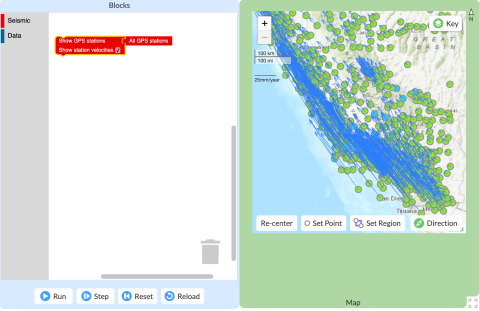Body
Image

Youthquake
The goal of the Youthquake project is to engage middle school students in authentic computer-based investigations of earthquake hazards and risk in order to increase their interest in, and identity with, geoscience learning. YouthQuake’s unique approach to the curriculum design process gathers a diverse team to co-design student learning experiences around investigating earthquake hazards and conducting risk assessments that are specifically related to the student’s community. The curriculum will encourage geoscientific thinking and computational reasoning. The intention of the co-design process is to draw on each individual team member’s expertise to build activities that engage students in learning and center that learning around community relevance. Together, the team will: (1) develop a series of activities that guide students in exploring local earthquake risk and community knowledge about mitigation options and preparedness; (2) engage students in authentic science and computer science-based investigations; (3) illuminate potential STEM careers by connecting students with scientists, graduate students, and other professionals related to earthquake hazards, risks and preparedness; (4)develop student understanding about natural hazards; and (5) develop students’ computational reasoning as it relates to real-world geoscience investigations.
Pillar 1: Innovative Use of Technologies in Learning and Teaching
The Youthquake project follows the computational practices of the geoscientists who conduct earthquake risk assessment, including (1) accessing and visualizing large datasets and (2) simulating and visualizing earthquake hazards and risk based on land deformation. Students leverage the power of computational models investigate problems framed around computational geoscience problems relevant to their neighborhoods. In this way, students’ computational investigations are in service of solving problems for communities.
Pillar 2: Partnerships for Career and Workforce Preparation.
The youthquake partnership follows a collaborative theory of action in which the teachers, scientists, educational researchers, workforce specialist and curriculum designers work through a co-design process. The goal of process is to develop a curriculum that builds bridges between students’ personal meaning and their perceived value of computational geology careers. Throughout the project, the partners will 1) negotiate multiple perspectives, 2) participate in the iterative curriculum design decisions, 3) learn from st
Pillar 3: Strategies for Equity in STEM Education
Strategy 1. Use contextual scaffolds that bridge real-world problems with students’ diverse forms of science knowledge and experiences. Strategy 2. Engage students in authentic investigations and practices of career professionals. Strategy 3. Reflect cultural assets of student communities. Strategy 4. Provide opportunities for students to exercise epistemic agency in shaping their knowledge through computation-mediated science practices.

Discipline(s)
Geosciences
Target Gradespan(s)
Middle school (6-8)
Target Participant(s)
Youth / students
Project Setting(s)
Formal Education
Category
Developing and Testing Innovations (DTI)